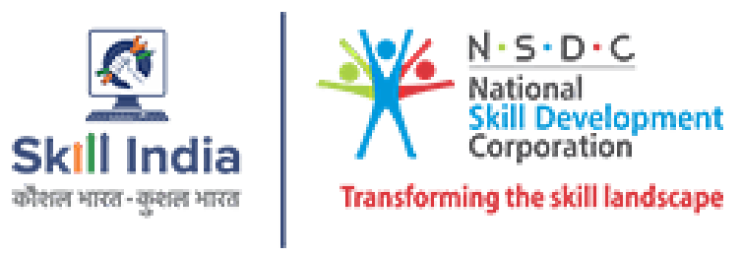Immense power and endless possibilities are embedded in India’s fashion heritage. Here’s how to unlock its potential through an online fashion design course.
The history of fashion in India goes back five millennia to the Indus Valley Civilization where advanced textile production techniques were used to weave fabrics like silk, cotton, and wool. The Mughal period saw an abundance of intricate embroidery and luxurious fabrics.
It took us some time to recover from the colonial decimation of our indigenous fashion heritage but Indian designers and enthusiasts took up the responsibility of restoring the glory of ethnic fashion post-independence.
And now, we are in the middle of an absolute boom in terms of fashion. We have a global market to target, a customer base that values innovation and creativity, a burgeoning culture of fashion events, and the boon of technology-driven education.
This is the right time for you to find a creative path to financial independence through an online fashion design course. There are more opportunities in the field than you can imagine for passionate individuals with adequate training.
Career opportunities for trained fashion designers

Fashion design is a layered trade that is expanding rapidly. Like any other creative discipline, fashion design has a diverse set of use cases. We often miss this point while trying to size up the career opportunities as a designer. Not every individual that undergoes a fashion design course does the same thing.
Fashion designer
A fashion designer is a comprehensive role that entails designing, sketching, choosing fabrics, overseeing the production process, and marketing clothes, accessories, and footwear. It is an opportunity to do it all and it involves a responsibility to know it all. You can dip your toe in different clothing cultures or specialize in a particular genre of fashion.
Accessory designer
An accessory designer specializes in accessories like jewelry, belts, handbags, shoes, and whatnot. You focus on everything but the clothes. Accessory designers can explore a host of employment as well as entrepreneurial opportunities.
Textile designer
A Textile designer works closely with fashion designers and accessory designers to create customized patterns, textures, and prints on fabrics that can then be incorporated into clothes or accessories.
Costume designer
Costume designers combine fashion designing skills with in-depth knowledge of historical periods and diverse cultures to create costumes – clothes, accessories – for the entertainment industry.
Stylist
A stylist is not a designer by vocation but possesses a deep understanding of fashion. They can look at you and at the sky and suggest the perfect lip color to match the warmth of your skin tone. They create magic with their choices.
Fashion illustrator
As a fashion illustrator, you create visual representations of designs in hand-drawn or digital formats. These illustrations can be used in fashion magazines, advertising, and marketing materials.
Fashion merchandiser
Marketing and product placement is as important as designing and making the products. Fashion merchandisers look after the business end of things. They analyze popular trends and determine the right product along with the marketing strategy for a specific time frame and demographic.
Pattern maker
People hardly mention pattern makers in the context of fashion design, but almost no design will be translated flawlessly to a piece of cloth without them. Pattern makers create the tools and templates that guide the perfect cutting and sewing of fabrics.
Fashion Blogger

Well, you know what that is. Imagine the depth, technical soundness, and impact of fashion blogs when they are created by practicing fashion designers. With the right strategies fashion blogging can turn into a successful standalone career.
How can you get started with fashion design?
Wait, take a deep breath, and think. This is a long-term commitment to a path that leads to incredible rewards but also entails hardwork, perseverance, and failure before success.
Step 1
Resist the temptation to jump into it blindly just because you can access a top-notch fashion design course online at an affordable price. Ask yourself if you are ready to commit a certain number of hours every week to the pursuit of fashion design skills. If yes, proceed.
Step 2
Earlier in the article, we discussed diverse sub-disciplines of fashion design. Write list them down on a piece of paper and do a little bit of research on each one using Google search or YouTube. Rate each career choice on a scale of 1-10 based on how excited you were to find out about them.
Design is essentially the marriage of science and creativity. Hence, it’s important to find something that excites you. Don’t be amazed if your preference changes, that’s how human beings work, but at least, the ratings will help you narrow down your search.
Step 3
Look for a fashion design course online. Well, you can go to a brick-and-mortar institute and spend a few lakhs on a degree in fashion technology, but we recommend that you keep that in store for a later stage – if you feel it’s necessary for your career.
Start with a platform like Hunar that offers you high-quality online courses tailored to every niche of fashion design from basic fashion design courses to trade-specific courses for textile design, styling, jewelry making, bag making, embroidery, and whatnot.
Special live classes, study materials, and certification aside, Hunar exposes you to national shows and supports you in starting up. Take a trial class now.
Step 4
When you are ready and certified, create a portfolio of your best work. Put your heart and soul into it and build an identity for yourself. This will help you attain employment or inspire your solopreneurial ventures.
Is a career in fashion design worth pursuing?
Let us be very transparent with this one. Your arrival into the fashion industry may be fueled by passion, driven by ambition, pushed for survival, or guided by different combinations of those. In any case, if you are a sincere student who transitions into a hardworking professional, there is a career to be made and it is worth pursuing.

An average fashion designer in India earns Rs 4.9 lakhs per year. Salaries usually go up to Rs 7.2 lakhs per annum. But that is for salaried professionals. An average fashionpreneur can have a turnover of Rs 10 to 14 lakhs a year with some effort. You already know the upper limit for high-achieving fashion entrepreneurs and designers, it is the sky.
To conclude
Fashion is like any industry, it has its ebb and flow, it has its billionaires and strugglers, and it has thousands of people who are transitioning from struggles to millions. It all comes down to your training, adaptability, and the decisions you make along the way.
Starting at the right point can make all the difference for you.


